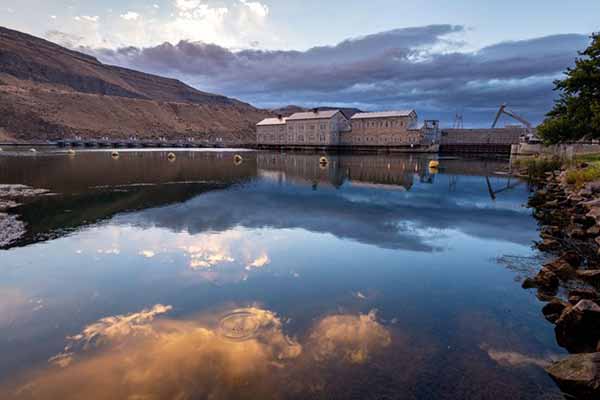The U.S. Energy Information Administration (EIA) estimates that solar power currently makes up 3% of the country’s electric generation. It’s an industry that continues to expand. By 2050, 20% of the nation’s energy could come from solar power.
The Pacific Northwest’s Nez Perce Tribe is part of that growing trend. Tribal leaders recently unveiled their 5311 Project, a solar initiative that aims to produce 500-plus megawatts by 2027.
Project Is a Partnership Between Nimiipuu Energy and Tesla
Nimiipuu Energy, the tribe’s utility cooperative, has already installed three solar operations in Lapwai, Idaho. Almost 800 solar panels are currently up and running. These panels work with batteries called megapacks and powerpacks. Tesla produces these utility-scale batteries, which are already in use in Australia. There are plans for four additional projects on the reservation.
Several municipal buildings, businesses, and senior housing on the reservation are solar-powered. The next phase is to install panels at 120 homes this summer. The Nez Perce Tribe consists of 3,500 citizens and its reservation spans approximately 770,000 acres.
Solar Power Would Lead to Energy Independence, Create More Jobs
The area currently receives hydropower from four lower Snake River dams. The tribe, however, sees several benefits in switching to solar.
The Nez Perce Tribe hopes to produce enough solar power to make the reservation energy independent. And the tribe hopes that other reservations will take an interest in solar power. The long-range goal is to connect multiple tribal reservations via software. The virtual power plant would direct energy where it’s needed, when it’s needed. Nimiipuu Energy is available to assist other tribes with site assessment, design/engineering, financing, build-out and workforce training, and service agreements.
These nationwide reservation-based solar projects would also create local jobs. While Nez Perce officials didn’t say how many workers the 5311 Project would need, the solar energy industry currently employs over 230,000 individuals.
Nimiipuu Energy Aims to Make Local Hydropower Obsolete
The Nez Perce reservation is already served by clean energy in the form of hydropower, by four dams built in the 1960s and 1970s. Today, these dams along the lower Snake River are owned and maintained by the U.S. Army Corps of Engineers.
But in addition to energy independence, the tribe is also concerned for the local fish. The Nez Perce and other organizations have long maintained that these dams interfere with salmon, orca, and steelhead migration and habitat.
Yet the welfare of local fish is disputed. Some lawmakers claim that other factors negatively impact the area’s fish, and it could cost as much as $33.5 billion to breach the four dams.
The tribe’s 5311 Project takes its name from prior research claiming that 5,311 megawatts of solar power are needed to replace the hydropower that the four lower Snake River dams produce; this figure is the amount of solar energy required to make them obsolete. However, it’s unclear when or if the federal government would breach the dams once the 5311 Project is complete.
The tribe maintains an optimistic outlook about the aggressive plan. Nez Perce Vice Chairman Shannon Wheeler said, “You start with the first step, and the main thing is we’ve started with our first step.”
Solar Power Is on This Year’s Reservation Economic Summit (RES) Agenda
Nez Perce Executive Director Jesse Leighton discussed the 5311 Project at the 2022 Reservation Economic Summit (RES) in May, hosted by the National Center for American Indian Enterprise Development (NCAIED) in Las Vegas. As an opportunity to connect “tribal leaders, members of Congress, federal agency representatives, state and local officials, and top CEOs on a national platform,” RES offers a variety of presentations in addition to energy, including enterprise development and infrastructure.
Wahleah Johns, the director of the U.S. Department of Energy’s Office of Indian Energy Policy and Programs, also spoke about solar energy in a presentation that covered logistics such as leasing and right-of-way.
Opinion writer: Lynette Garet
The opinions, beliefs, and viewpoints expressed by the various authors do not necessarily reflect the opinions, beliefs, or viewpoints of Interactive Energy Group, LLC (IEG) or its parent companies or affiliates and may have been created by a third party contracted by IEG. Any content provided by the bloggers or authors are of their opinion and are not intended to malign any individual, organization, company, group, or anyone or anything.
Brought to you by energysavings.com
All images licensed from Adobe Stock.
Featured Image

